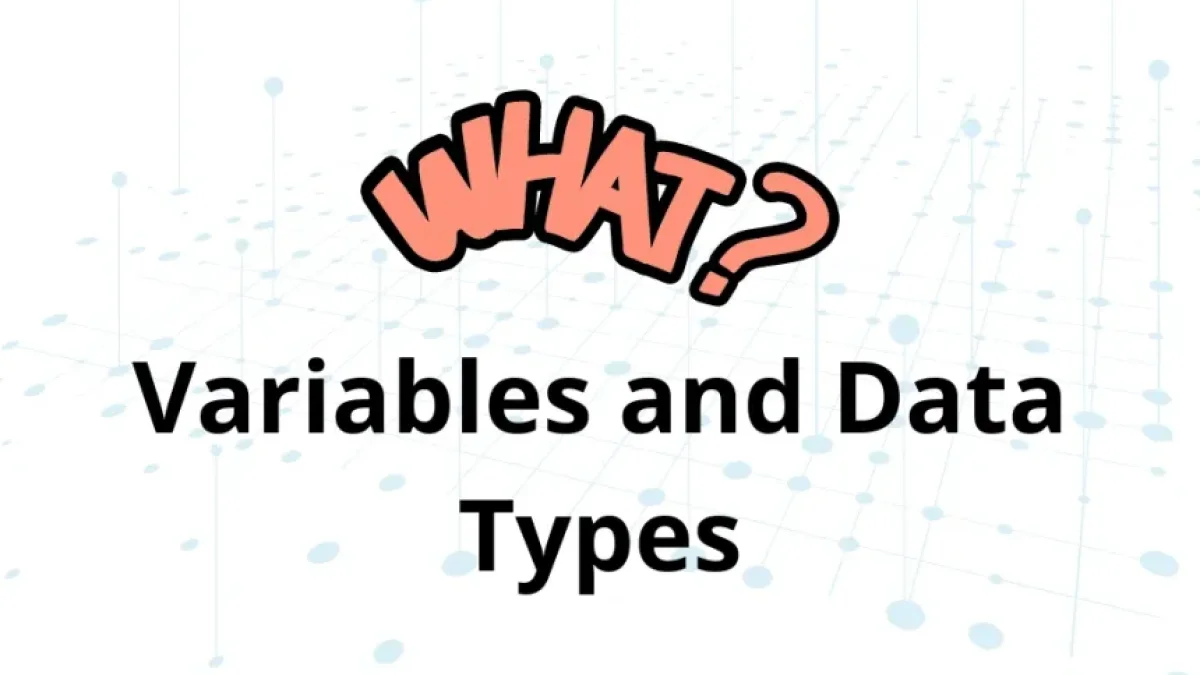Variables and Data Types Basic Concepts You Should Master


Programming is an art and a science that anyone can learn. To get started, there are some fundamental concepts we need to understand, and among them, variables and data types are essential. In this article, we will delve into these concepts, their characteristics, and their importance in programming.
What is a variable?
A variable is a storage space used to hold information. This information can vary throughout the program, hence its name. In simple terms, a variable acts as a label pointing to a value in memory.
Characteristics of variables
- Name: A variable must have a name that identifies it. This name should be unique within the context where it is used.
- Type: The type of a variable defines what kind of data it can store. This includes integers, floats, strings, among others.
- Value: This is the content that is stored in the variable at a given moment.
Data Types
Data types are essential for the correct manipulation of information in any program. Each programming language has its own data types, but some are common in most. Here are the most commonly used data types:
Primitive Data Types
Primitive data types represent a single value and cannot be divided into smaller parts. Some examples include:
Integers (int)
Integers are numbers without decimals. They can be positive or negative. For example:
age = 30
Floats (float)
Read also
Floats are numbers that include a decimal part. For example:
price = 19.99
Strings (str)
Strings are sequences of characters. They are used to represent text. For example:
name = "Juan"
Booleans (bool)
Booleans represent two possible values: true (True) or false (False). They are commonly used in conditions. For example:
is_active = True
Complex Data Types
Complex data types can store multiple values or combinations of data types. Some examples are:
Lists
Lists are ordered collections of elements. They can contain different types of data. For example:
fruits = ["apple", "banana", "orange"]
Tuples
Tuples are similar to lists but are immutable, meaning you cannot change their elements once they have been defined. For example:
coordinates = (10.0, 20.0)
Dictionaries
Dictionaries are collections of key-value pairs. They allow for more structured data storage. For example:
person = {
"name": "Maria",
"age": 25
}Why are variables and data types important?
Variables and data types are fundamental in programming for several reasons:
- Organization: They allow programmers to efficiently organize and manage data.
- Abstraction: They facilitate the representation of complex concepts through simpler data structures.
- Manipulation: They allow for mathematical and logical operations on the data.
- Interaction: They are essential for interaction between the user and the program.
Best Practices when Working with Variables and Data Types
There are several best practices that any programmer should follow when working with variables and data types:
1. Name variables appropriately
Using descriptive names for variables helps make the code more readable and maintainable. For example, instead of using x, it is recommended to use age.
2. Use appropriate data types
Selecting the correct data type for each variable can improve performance and clarity of the code. Use integers for counts, floats for measurements, and strings for text.
3. Maintain consistency
It is important to be consistent in the use of data types throughout your code. This helps prevent hard-to-detect errors.
4. Comments
Adding comments that explain the purpose of the variables can be helpful, especially in collaborative projects.
Conclusions
Variables and data types are fundamental concepts that every programmer should master. These tools not only facilitate information management but also enable the creation of more efficient and effective programs. By understanding and applying these notions correctly, you will be better prepared to face more complex programming challenges.
Remember that practice is key to improving your skills. Start experimenting with variables and data types today!



















